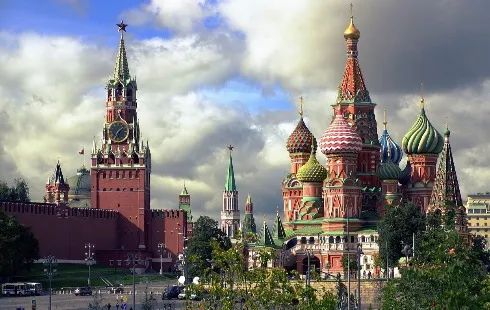
Revolutionising Websites for Cafés, Restaurants, and Bars Across Europe
Section: News
 Following the death of Pope Francis, the attention of the global Catholic community, the media, and the religious world now turns to the centuries-old ritual of the papal conclave. This secretive process, steeped in tradition, mystery, and ceremony, is responsible for selecting the next leader of the Roman Catholic Church. While the world awaits the outcome, here are ten compelling facts that offer insight into what happens behind the closed doors of the Vatican.
Following the death of Pope Francis, the attention of the global Catholic community, the media, and the religious world now turns to the centuries-old ritual of the papal conclave. This secretive process, steeped in tradition, mystery, and ceremony, is responsible for selecting the next leader of the Roman Catholic Church. While the world awaits the outcome, here are ten compelling facts that offer insight into what happens behind the closed doors of the Vatican.
1. The Conclave Is Held in the Sistine Chapel
The word "conclave" comes from the Latin cum clave, meaning "with a key." It reflects the process: cardinals are literally locked inside the Vatican until they elect a new pope. The Sistine Chapel, famed for Michelangelo's frescoes, becomes more than just a masterpiece of art; it becomes the spiritual and administrative epicenter of the Catholic Church for the duration of the conclave.
2. Only Cardinals Under 80 Can Vote
Not all cardinals participate in electing a new pope. Only those who have not yet reached their 80th birthday on the day the papacy becomes vacant are eligible to vote. As of Pope Francis's death, there are around 120 such cardinal-electors, although the exact number can fluctuate due to resignations, deaths, or new appointments.
3. Secrecy Is Enforced Rigorously
Every cardinal participating in the conclave takes a solemn oath of secrecy. Any violation is punishable by excommunication. No phones, internet access, or outside contact is permitted during the voting period. In fact, the Sistine Chapel is scanned and swept for electronic devices and even bugging equipment before the process begins.
4. Balloting Follows a Strict Ritual
Each day of the conclave typically includes four votes: two in the morning and two in the afternoon. Cardinals write their choice on a rectangular ballot and fold it twice. Each ballot is placed on a gilded plate and then slid into a chalice. After each voting session, the ballots are burned. If a pope has not been elected, a chemical is added to produce black smoke (fumata nera). White smoke (fumata bianca) signals that a new pope has been chosen.
5. A Two-Thirds Majority Is Required
To be elected pope, a candidate must receive a two-thirds majority of the votes. If there are 120 cardinal-electors, this means at least 80 votes are needed. This rule ensures broad consensus and discourages divisive or purely political choices. The rules allow for adjustment to a simple majority if the conclave reaches a stalemate after many days, though this is rarely needed.
6. The Next Pope Can Be Any Baptized Male (But Usually Is a Cardinal)
While in theory any baptized Catholic male could be elected pope, in practice, it has almost always been a cardinal. The last non-cardinal elected was Pope Urban VI in 1378. The cardinals typically select one of their own, as they are the most experienced and deeply involved in Church affairs.
7. The Conclave Begins After a Nine-Day Mourning Period
Following the death of a pope, there is a traditional nine-day period of mourning called the novemdiales. During this time, the Church and the faithful pray for the deceased pope, and preparations for the conclave are made. The cardinals begin arriving in Rome, and logistical, liturgical, and security measures are put in place.
8. Cardinals Stay in the Domus Sanctae Marthae
Though voting takes place in the Sistine Chapel, the cardinals reside in the Domus Sanctae Marthae, a modern guesthouse inside Vatican City. This arrangement, established by Pope John Paul II in 1996, replaced the old method of housing cardinals in makeshift quarters throughout the Vatican. It allows for a more comfortable, yet still cloistered, setting.
9. The Dean of the College of Cardinals Plays a Key Role
The Dean of the College of Cardinals, currently Cardinal Giovanni Battista Re, leads the conclave. He begins the proceedings with a homily and oversees the voting sessions. If the elected pope is not a bishop, the Dean ordains him. Once a candidate accepts his election, the Dean asks him, "By what name shall you be called?" This is when the new pope chooses his papal name.
10. The Announcement: "Habemus Papam"
When a new pope is elected, the white smoke billows from the chimney of the Sistine Chapel, and the bells of St. Peter's Basilica ring out. The senior Cardinal Deacon then appears on the central balcony of the basilica and proclaims, "Habemus Papam!" ("We have a Pope!"). The new pontiff then emerges to deliver his first blessing, Urbi et Orbi ("To the City and the World"), marking the beginning of a new papal era.
The conclave is not merely a political process; it is a spiritual journey undertaken by the Church's highest leaders, one designed to invoke the guidance of the Holy Spirit. As the world watches with curiosity and anticipation, the cardinals engage in deep prayer, reflection, and discernment to choose a successor worthy of St. Peter's legacy. The future of over a billion Catholics may be shaped in these few cloistered days, behind one of the most iconic doors in all of Christendom.

Section: News

Section: News

Section: News

Section: Arts

Section: Fashion

Section: News

Section: News

Section: News

Section: News

Section: News
Health Insurance in Germany is compulsory and sometimes complicated, not to mention expensive. As an expat, you are required to navigate this landscape within weeks of arriving, so check our FAQ on PKV. For our guide on resources and access to agents who can give you a competitive quote, try our PKV Cost comparison tool.
Germany is famous for its medical expertise and extensive number of hospitals and clinics. See this comprehensive directory of hospitals and clinics across the country, complete with links to their websites, addresses, contact info, and specializations/services.
Join us for an enchanting Christmas adventure at the Münchner Marionettentheater! Experience the marionette play 'Der verschwundene Wunschzettel' by Siegfried Böhmke, featuring our beloved Kasperl Larifari and his little friend Stupsi. As Christmas approaches, both Kasperl and Stupsi have prepared...



No comments yet. Be the first to comment!